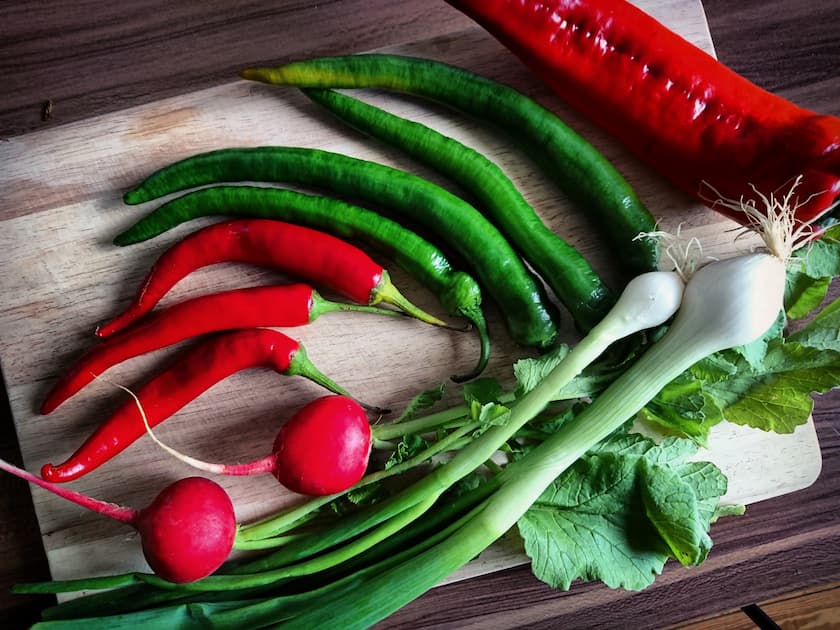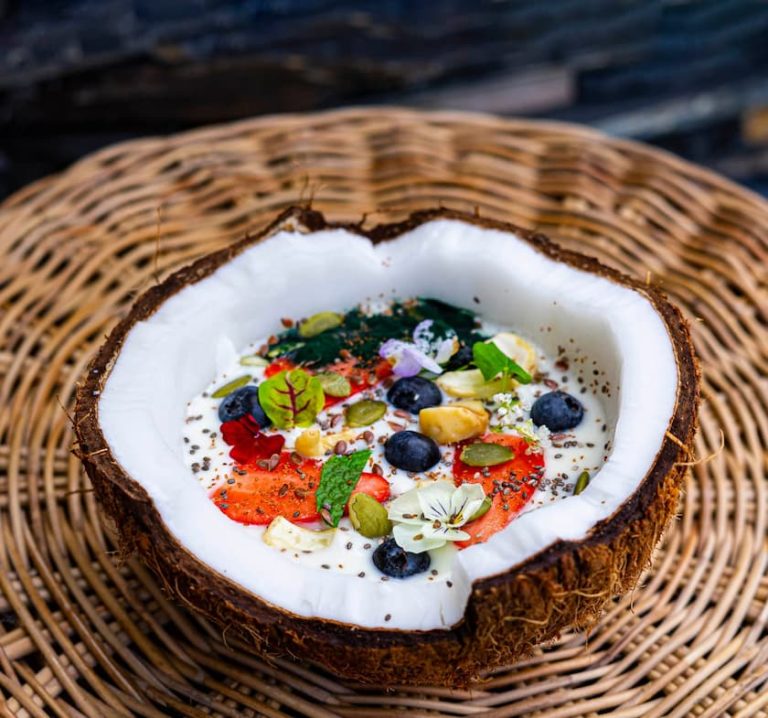There are many misconceptions about about what can, or cannot, be eaten when trying to avoid and / or manage T2D.
For starters, there is no ‘diabetes diet;’ what works for one person might not work for another. Everyone will have a different, sometimes hugely different, eating plan to manage their blood sugar and weight.
Beware of marketing labels like ‘Superfood’ that appear on numerous foods; the FDA does not have such a label or classification. Skip marketing hype and focus on eating real, whole foods that are proven good for you like berries, avocado, leafy greens and lean meats.
Speaking of marketing hype, you can skip the various fad diets too. Diets such as paleo or keto might help you lose weight but there is little research demonstrating their long-term health benefits or their ability to prevent (or manage) T2D. In fact, some research indicates that eating red meat increases the risk of T2D.
What everyone needs, especially those who are trying to manage or avoid T2D, is a diet that has variety and balance; a mixture of foods from each of the macronutrient groups … every day!
What are the macronutrients?
Macronutrients are the essential ‘fuel’ that your body needs to function properly and all three will sound familiar: Carbs, Protein and Fat.
As aforementioned, everyone’s dietary needs will not be the same; a body builder’s balanced diet will look very different from that of someone who is trying to lose weight or manage high blood sugar levels. The common theme will be a sensible mix of all three macronutrients; an extreme focus on consuming or restricting a particular macronutrient is generally not beneficial.
CARBS: How many should I eat?
There’s no ‘one size fits all’ answer as there are so many variables to consider including: age, weight, activity level, if you are borderline T2D or have T2D.
Remember that there are three types of carbs; sugars, starches and fibre. Therefore, another major consideration is the type; a donut, banana and carrot all have carbs but each has a very different combination of the three carb types not to mention nutritional profile.
Some nutrition ‘gurus’ will say you don’t need carbs at all but that’s not accurate. All three carb types are essential, keeping them in balance is key!
Fibre is especially important as it is more filling and energy rich; it lessens the absorption of dietary fat and cholesterol while slowing the absorption of sugars as well as helping to lower blood sugar levels.
Fruit may not be an obvious choice for those trying to reduce sugar carbs but research indicates that regular consumption of fruits and veggies can reduce the risk of diabetes significantly.
An Australian study found that eating two servings of fruit per day could lower the likelihood of developing T2D by 36%. The same study, however, cautions that drinking fruit juice does NOT reduce the risk of T2D as juice is higher in sugars and lower in fibre.
Eating carbs that are heavier in sugars and starches in combination with foods that have protein or fat slows down how quickly your blood sugar rises BUT be mindful of the type of fat and of total fat intake if trying to lose weight.
PROTEIN: essential for more than just muscles
Protein is often associated with building muscles but it’s also essential for our brain, nervous system, blood, skin, and hair.
There are two types of protein, complete and incomplete; and there are two sources of protein, plant based and animal based.
Complete proteins have all nine of the amino acids that the body cannot make and are essential for the body to function. Contrary to popular belief, complete proteins can be plant or animal based. Good sources include:
- animal proteins: meat, poultry, seafood, eggs and milk
- plant proteins: soy (tofu, edamame, tempeh), quinoa, amaranth, spirulina and hemp seeds.
Incomplete proteins have some but not all of the essential amino acids. Anyone eating a plant based diet needs to be mindful to consume either the aforementioned complete proteins or pair incomplete protein sources to create complementary proteins so that the body has access to all the essential amino acids. The complementary protein sources do not have to be eaten together at the same meal but popular combinations include:
- rice and beans
- pita and hummus
- whole wheat bread and peanut butter
- lentils and almonds
To get the most benefit from protein when managing or avoiding T2D, remember to choose healthier options which means avoiding or reducing protein sources that contain saturated fats (e.g. fatty meats & processed meats) and considering preparation method; deep fried and breaded is a bad choice while roasted, steamed and baked are good choices.
FAT: it’s not the enemy
Despite the advice we heard for many years, ‘avoid fat, it’s bad for you,’ the reality is, we need fat in our diet and in our bodies. Fat cushions organs, stores energy, supports cell growth and our brains are ~60% fat; that alone should make us all ‘rethink’ the importance of fats!
While fats are higher in calories, double the calories per gram versus protein and carbohydrates, fat slows down digestion (which is better than fast digestion), makes you feel full longer and helps balance blood sugars. Therefore, eating the right types of fat is important for maintaining a strong, healthy body AND reducing the risk of T2D as well as other health concerns.
There are three primary fat types: unsaturated, saturated and trans.
Unsaturated (good) fats: both monounsaturated and polyunsaturated fats promote healthy blood cholesterol levels as well as good heart and vascular health.
Sources of good fats include:
- Olive, sunflower, safflower, cottonseed and canola oils
- Avocados
- Nuts and seeds, such as almonds, pecans, walnuts, peanuts (peanut butter), flaxseed, chia seeds and pumpkin seeds
- Oily / Fatty fish, such as salmon, mackerel, sardines, tuna and cod
Saturated (not so good) fats are found in dairy and meat products. There is conflicting research regarding saturated fats and their impact on cholesterol as well as T2D. Some experts argue whole fat dairy is beneficial for preventing diabetes while others argue that zero saturated fat is the best way to prevent / reverse T2D.
The conflicting research underscores what was stated at the beginning of this article, there is not a singular diet plan that fits every person. Perhaps take the middle road, limit saturated fat content, allow it as an occasional treat, focus on the healthier mono & poly unsaturated fats and see how your body reacts.
Saturated fat sources to be aware of, avoid and / or reduce:
- Pork & Beef items such as Lard, Fatback, Salted Pork, regular ground beef, bologna, hot dogs, sausage, bacon, spareribs and gravy made with meat drippings
- Poultry skins (chicken, turkey, duck)
- Oils such as Palm, Palm Kernel and Coconut
- High fat dairy such as full-fat cheese, cream, ice cream, butter, whole milk, 2% milk, sour cream and cream based sauces
Trans (very bad) Fats are created when liquid oils are turned into a solid fat. These are often found in packaged goods as well as some mass produced bakery items. The terms to watch for on ingredient labels are hydrogenated oil, partially hydrogenated oil and shortening.
Avoid highly processed items such as chips, crackers, packaged bakery items and fast foods like french fries as they offer little to no nutritional value and are often made using trans fats.
Most margarines were originally made with trans fats but some brands have changed their recipe so check the labels carefully when shopping!
While some health experts argue butter from grass fed cows is a better choice than any margarine, other experts suggest skipping both butter and margarine in favour of nut-butters or avocado. The one thing all the experts agree on; AVOID trans fats!
BEVERAGES: beware of the sugars, limit alcohol and stay hydrated!
Often overlooked when thinking about food choices, the drinks chosen throughout the day have an equally important impact when managing weight and T2D. Consuming only one or two sugary beverages per day increases the risk of developing T2D by 26%!
Avoid all sugary drinks including sodas, energy drinks, sweetened coffees & teas and even fruit juices (eat the fruit rather than drinking the juice).
Diet sodas are equally bad; while they may have a reduced sugar load, the artificial sweeteners can alter the gut bacteria and that can increase the risk of T2D.
Beware of drinks that are not obviously sugary such as tonic water; despite the overall bitter flavour, many brands are loaded with sugar.
Alcohol is another beverage choice that needs careful consideration. Some studies have found moderate alcohol consumption (< two drinks per day; not every day!) can actually lower the risk of T2D whereas drinking more heavily ( & two drinks per day and / or drinking every day) is problematic because alcohol is high in calories and higher consumption may cause pancreatitis, a chronic inflammation of the pancreas which can lead to T2D.
Good beverages choices include plain water, soda water (unsweetened, of course!) and, if you need an energy boost, unsweetened coffee and tea.
Herbal teas are another good choice and provide the additional benefit of inducing calmness; remember stress can increase the risk of T2D so remaining calm is beneficial.
Another beneficial habit, stay hydrated! There are many health benefits of proper hydration but for people managing T2D, hydration is essential; even mild dehydration will cause an increase in blood sugar levels!
Eat to live and live to eat!
Making dietary changes and eating healthfully is a great opportunity to explore new and different foods, making meal planning and eating a fun new adventure full of delicious new flavour combinations! To start your new eating journey just remember to:
- eat a variety of nutrient dense, colourful foods with plenty of fibre and healthy fats
- minimise saturated fats
- avoid trans fats, added sugar, salt and empty calorie foods (highly processed / junk foods)
- consider getting dressings / sauces (often high in added sugars!) on the side so you can control portion size
- share your meal and the occasional dessert so you can satisfy your taste buds and your health goals at the same time
Need Help?
You don’t have to take the first steps alone, the Ayurah Wellness Team are here to support and guide you. We understand that creating healthful eating habits, and maintaining them, needs to be easy, sustainable and that meal time should be joyous and delicious, not stressful.
The Ayurah wellness experts and dieticians will work with you to develop a meal plan, adhering to scientifically established principles, for achieving your specific health goals. Our team will explain why to avoid certain foods, which foods offer the most benefit to your wellbeing and the best cooking methods.
We focus on wholesome foods and strive to accommodate your tastes and lifestyle, ensuring you can easily replicate recipes at home and enjoy balanced, nutritious and delicious meals that put you on the road to better health and happiness!
Related Articles
- When to Eat & Type 2 Diabetes
- Stress & Type 2 Diabetes
- Understanding Carbs and Type 2 Diabetes
- Healthy Living with Diabetes
- Physical Activity & Type 2 Diabetes
AYURAH SPA & WELLNESS CENTRE
33 Moo 5, Khok Kloi,
Takua Thung, Phang Nga
82140 Thailand
T: +66 (0) 76 580 339
AYURAH SPA & WELLNESS CENTRE
183 Moo 4, Pak Nam Pran,
Pranburi, Hua Hin
77220 Thailand
T: +66 (0) 32 618 300












